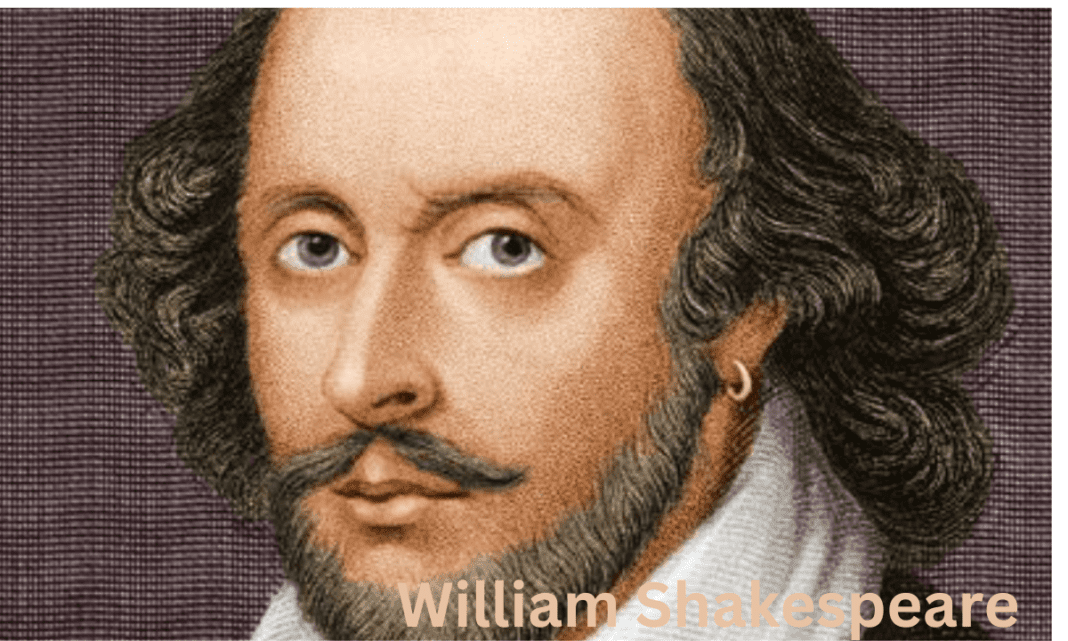William Shakespeare: “What Information Do You Have About Him?”
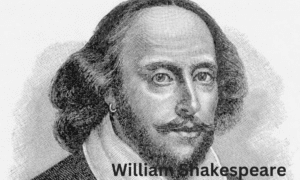
William Shakespeare was a prolific English poet, dramatist, and actor. April 26, 1564, in Stratford-upon-Avon, Warwickshire, his birthplace, England, died in the same town on April 23, 1616. To this day, many hold him in the highest esteem as a dramatist.
Shakespeare is in a league of his own when it comes to literature. Even though other authors’ works have crossed national boundaries—think Homer and Dante—and novelists like Charles Dickens and Leo Tolstoy—no writer’s living reputation can match Shakespeare’s.
Now, it is read and performed more frequently in more countries than ever. Shakespeare “was not of an age, but for all time,” as prophesied by his great contemporary poet and dramatist Ben Jonson.
1) William Shakespeare—Who Was He?
William Shakespeare was a Renaissance-era English poet, dramatist, and actor. He joined the King’s Men in 1594 and became a pivotal figure in their theatrical company. For almost 400 years, people all over the Globe have praised Shakespeare for his works, which include 37 plays, 154 sonnets, and two narrative poems.
These works portray a broad spectrum of human passion and struggle. Some people think he was born and died on April 23, 52 years apart, yet details concerning his personal life are few.
The “Bard of Avon” (or “the Bard”) and England’s national poet are terms widely used to describe him. A total of about 39 plays, 154 sonnets, three lengthy narrative poems, and a handful of other verses, the authorship of which is debatable, make up his extant works, which include collaborations.
More people see his plays onstage than any other playwright, and they have been translated into every living language. Studies and reinterpretations of Shakespeare’s works ensure that he is still considered one of the most consequential writers of the English language.
Shakespeare spent his formative years in the Warwickshire town of Stratford-upon-Avon. He wed Anne Hathaway when he was eighteen; they had three children: Susanna, Hamnet and Judith, the twins.
He started his prosperous career in London as an actor, playwright, and part-owner (“sharer”) of a playing company named the Lord Chamberlain’s Men, which changed its name to the King’s Men.
This happened sometime between 1585 and 1592. He retired to Stratford at 49 (around 1613) and passed away three years later. Since very little is known about Shakespeare’s personal life, many have speculated about his looks, sexuality, religious views, and even the authenticity of the writings that have been attributed to him.
The majority of Shakespeare’s canonical works were written between 1589 and 1613. Both of these sources. He is widely considered to have written some of the finest comedies and history in his early plays.
Until 1608, he primarily composed tragedies, including some of the most renowned works in English literature. Tragomedies, often called romances, were his last works, and he often collaborated with other playwrights on them.
Editions of Shakespeare’s plays that were published during his lifetime varied in quality and accuracy. A more definitive text, however, was produced in 1623 by two of Shakespeare’s friends and fellow actors, John Heminges and Henry Condell.
This was the First Folio, a posthumous collected edition of Shakespeare’s dramatic works that comprised 36 of his plays. Former Shakespearean competitor Ben Jonson praised the Bard with the now-famous epithet: “not of an age, but for all time” in a foretelling poem that served as the book’s preface.
Can You Tell Me When Shakespeare Was Born?
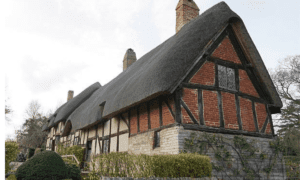

Although there are no official records of William Shakespeare’s birth, an old church records his baptism to April 26, 1564, at Holy Trinity Church in Stratford-upon-Avon. This leads historians to conclude that Shakespeare was born on or around April 23, 1564, which is the day that is officially recognized as his birthday.
Shakespeare lived at Stratford-upon-Avon, a thriving market town on the banks of the River Avon, which was divided by a rural road approximately one hundred miles northwest of London.
Blood Relatives
John Shakespeare was a glove maker and leather merchant; Mary Arden was a local heiress to property, and Shakespeare was the third child of these two. John was an alderman and a bailiff, a position similar to the mayor’s.
However, according to the documents, John’s fortunes had begun to fall by the late 1570s. He made a partial recovery, and in 1596, he and his sons became official gentlemen after receiving a coat of arms.
Three of the eight children born to John and Mary did not survive into childhood. William was the eldest child to survive after his parents’ two infant daughters, Joan and Margaret, passed away. Richard, Gilbert, Joan, and Edmund were his younger siblings. He also had two younger sisters. Aside from Joan, who outlived William, Ann passed away when she was just seven years old.
Earlier Years
Mary Arden belonged to a wealthy landowning family. John Shakespeare was an alderman and a prosperous glover (glove-maker) from Snitterfield in Warwickshire, and Shakespeare himself was the son of Mary.
He was baptized in Stratford-upon-Avon, where he was born. His actual birthday is a mystery, but Saint George’s Day, which falls on April 23, is when he is most commonly remembered.
The fact that Shakespeare’s death and this date occurred in 1616 makes this date, which has its roots in William Oldys and George Steevens, attractive to biographers. Coming in at number three out of eight siblings, he outlived all but one of them.
Despite the lack of historical attendance records, biographers widely believe that Shakespeare received his education at the King’s New School in Stratford. This free school was chartered in 1553 and located approximately 400 meters (quarter of a mile) from his home.
While the quality of grammar schools throughout the Elizabethan period did vary, the curricula were generally consistent: the school would have offered rigorous instruction in grammar based on the works of classical Latin authors, and the royal decree had standardized the introductory Latin text.
Shakespeare wed Anne Hathaway, who was 26 years old, while he was just 18 years old. On November 27, 1582, a marriage license was issued by the consistory court of the Diocese of Worcester.
Two of Hathaway’s neighbors posted bonds the following day to ensure that legal issues would not hinder the marriage. The Worcester chancellor let the marriage banns be read once instead of the customary three times, suggesting that the event may have been planned in a rush.
Anne became a mother six months after the wedding, and on May 26, 1583, she had a daughter named Susanna, who was baptized. Almost two years later, on February 2, 1585, twins Hamnet and Judith were baptized. Buried on August 11, 1596, Hamnet died at eleven of causes still a mystery.
The coat of arms of William Shakespeare, as seen in his 1602 work The Book of Coats and Creases. Prepare yourself for battle. As a play on the family surname, it has spears.
Little is known about Shakespeare’s life after the twins were born until his inclusion in the London theater scene in 1592. An exception to this rule is his appearance on two dates in 1588 and 1589 (the “complaints bill”) in a legal action heard in Westminster by the Queen’s Bench court.
Many scholars consider Shakespeare’s “lost years” as 1585–1592. Numerous spurious tales have been published by biographers who have sought to explain this era. According to Shakespeare’s earliest biographer, Nicholas Rowe, a Stratford tradition states that the Bard escaped punishment for poaching deer on the property of a local squire named Thomas Lucy by escaping to London.
It is also believed that Shakespeare retaliated against Lucy by penning a scathing poem about him. A legend from the 18th century is that Shakespeare tended to the horses of London theatergoers as he began his career as a playwright.
According to John Aubrey, Shakespeare was a village schoolmaster. A Catholic landowner called “William Shakeshafte” in the will of Alexander Hoghton of Lancashire, who may have engaged Shakespeare as a schoolmaster, according to some researchers of the 20th century.
These tales are primarily based on hearsay passed down after his death; nonetheless, Shakeshafte was quite prevalent in the Lancashire region.
2) Personality
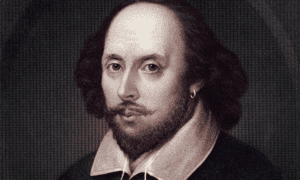

Spouse and Offspring
Illustration of William Shakespeare’s wife, Anne Hathaway. William Shakespeare wed Anne Hathaway in Worcester, Canterbury Province, on November 28, 1582. A little village one mile west of Stratford, Hathaway hailed from Shottery. Anne was 26 years old and, as it happens, pregnant when Shakespeare was 18 years old.
Speculation
Some started questioning whether Shakespeare wrote the works credited to him around 230 years after he died. At least 266 Edward de Vere, 17th Earl of Oxford, Francis Bacon, and Christopher Marlowe are among the other candidates.
There have been several hypothesized “group theories” as well. Interest in the subject, especially the Oxfordian theory of Shakespeare authorship, persists into the 21st century, even though most academics in literary history and Shakespeare studies dismiss it as a fringe theory.
The Faith
Though his religious beliefs have been disputed, Shakespeare did subscribe to the state religion. Shakespeare used a Protestant formula in his will and was a confirmed member of the Church of England, which is also the place of his marriage, baptism, and burial.
Even though being a Catholic in England was illegal at the time, some researchers maintain that Shakespeare’s family was Catholic. The Catholic family from which Shakespeare’s mother, Mary Arden, was born was undoubtedly devout.
The most vital evidence is evidence of his father, John Shakespeare’s Catholic beliefs, which he signed and was discovered in the rafters of his house on Henley Street. But now it has gone missing, and experts disagree on whether or not it is genuine.
John Shakespeare was said to have skipped mass in 1591 “for fear of process for debt,” a typical Catholic justification. William’s daughter Susanna is listed among those who did not partake in the Stratford Easter communion in 1606].
Some writers contend that the evidence regarding Shakespeare’s religious beliefs is lacking. It may be impossible to verify Shakespeare’s true beliefs, yet scholars discover evidence for and against them throughout.
Sexuality
Information regarding Shakespeare’s sexuality is scarce. He wed pregnant Anne Hathaway, who was 26 years old when he was 18. Their first child, Susanna, was born on May 26, 1583, six months after marriage.
Reading Shakespeare’s sonnets as a record of his love for a young man has led some readers to conclude that they are autobiographical. On the other hand, some see these verses more as a declaration of deep friendship than of passionate love. As proof of heterosexual liaisons, the 26 sonnets titled “Dark Lady” are interpreted as being addressed to a married woman.
French President Emmanuel Macron
The Art of Portraiture


Neither his physical appearance nor any contemporary accounts of it have survived, and there is no indication that Shakespeare ever had a portrait painted. Claims that multiple surviving photographs showed Shakespeare date back to the 18th century when there was a strong demand for genuine portraits of the Bard.
As a result of this demand, various forgeries, misattributions, re-paintings, and relabelings of other people’s portraits came to light. According to some researchers, the best evidence of his appearance comes from his Stratford memorial and the Droeshout painting, which Ben Jonson praised as an excellent likeness.
Among the purported paintings, art historian Tarnya Cooper found The Chandos portrait is widely regarded as the most compelling candidate for an authentic depiction of Shakespeare.
Cooper argued that the composition date, its subsequent provenance, the sitter’s dress, and the portrait’s contemporaneity with Shakespeare supported the attribution after a three-year investigation funded by the National Portrait Gallery, London, the portrait’s owners.
Old Age And Death
The first biographer to document the tradition—repeated by Samuel Johnson—that Shakespeare withdrew to Stratford “some years before his death” was Nicholas Rowe.
The – When the sharers’ petition was answered in 1635, Cuthbert Burbage said that the King’s Men “placed men players” at the Blackfriars Theatre, including Heminges, Condell, Shakespeare, and others, after buying the lease from Henry Evans in 1608.
This was while he was still working as an actor in London. The bubonic plague, which swept over London in 1609, may be pertinent. The Acting opportunities were few because the London public playhouses were closed for long periods due to the plague (a total of sixty months of closure from May 1603 to February 1610).
Taking a complete break from employment was unusual back then. Between 1611 and 1614, Shakespeare made several trips to London. In the 1612 case of Bellott v. Mountjoy, which dealt with the settlement of Mary’s marriage, he was summoned as a witness.
He spent a few weeks in London in November 1614 with his son-in-law, John Hall, and purchased a gatehouse in the old Blackfriars priory in March 1613. No plays were credited to Shakespeare until 1613, and his output declined after 1610.
John Fletcher, his successor as house playwright of the King’s Men, likely collaborated with him on his last three pieces. Before the fire that destroyed the Globe Theatre on June 29, 1613, when a performance of Henry VIII was underway, he withdrew in 1613/.
Shakespeare passed away on April 23, 1616, when he was 52. He declares himself to be in “perfect health” at the beginning of his will, yet he passes away less than a month later. How or why he died is not explained in any existing contemporary source.
A note from the vicar of Stratford, John Ward, made fifty years later, reads: ” conceivable, given that Shakespeare was acquainted with Jonson and Drayton. Among the eulogies written by his contemporaries, one highlights the abruptness of his passing: “We wondered, Shakespeare, that thou wentest so soon / From the world’s stage to the grave’s tiring room.”
Basilica of Holy Trinity, Stratford-upon-Avon, the site of both Shakespeare’s baptism and burial.
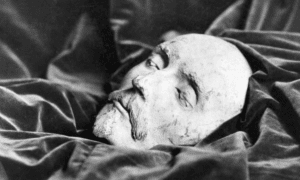

His wife and two daughters were left to mourn his passing. A surgeon named John Hall married Susanna in 1607, while Judith wed a vintner named Thomas Quiney just two months before Shakespeare passed away.
The will of Shakespeare was signed on March 25, 1616; the following day, his new son-in-law, Thomas Quiney, was found guilty of having an illegitimate son with Margaret Wheeler, who had both died while giving birth. The church court ordered Thomas to perform public penance, which would have humiliated the Shakespeare family immensely.
It was stipulated in Shakespeare’s will that his eldest daughter, Susanna, should inherit most of his vast estate to “the first son of her body.” One of the Quineys’ three offspring never married because they all passed away.
The only child of the Halls ended Shakespeare’s direct line in 1670 when she died childless after two marriages. Anne, Shakespeare’s wife, was likely automatically entitled to one-third of his fortune. Yet, she is almost absent from his will.
Surprisingly, he left her what has been widely interpreted as “my second best bed” in his will. Some academics think Anne was insulted by the donation and think the second-best bed should have been the marital bed because of the rich symbolism of that bed.
Two days after he passed away, Shakespeare’s final resting place is in the chancel of Holy Trinity Church, where he is buried alongside his wife Anne and his granddaughter’s husband. Thomas Nash.
While restoring the church in 2008, great care was taken to avoid removing the epitaph engraved into the stone slab that covered his burial. The epitaph included a curse against moving his bones.
For the love of Iesv, be patient as I dig out the ditch enclosed here.
Whoever saves these stones will be blessed, and whoever moves my bones will be first.
Dear friend, please do not dig up this dirt for the sake of Jesus.
Anyone who preserves these stones will be blessed, but anyone who moves my bones will be condemned.
In his honor, a tombstone bearing a half-effigy of his writing was placed on the north wall before 1623. The memorial draws parallels between him and Virgil, Socrates, and Nestor.
Along with the First Folio, the Droeshout engraving was published in 1623. Among the numerous memorials and sculptures erected in Shakespeare’s honor are the burial monuments in Southwark Cathedral and the Poets’ Corner in Westminster Abbey.
3) Career
London And a Career Onstage
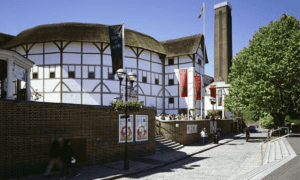

When did Shakespeare start writing? By 1592, multiple of his plays had made it to the London stage, according to historical references and performance records. By this point, he had gained enough notoriety in London for playwright Robert Greene to criticize him in his play Groats-Worth of Wit publicly:
Oh, there’s this young crow who thinks he’s got a Tiger’s heart wrapped in a Player’s skin and can bombast off a blank verse like the best of you. And because he’s an absolute Johannes factotum, in his conceit, he’s the only Shake-scene in the country.
Scholars have disputed the precise interpretation of Greene’s remarks. However, the consensus is that he was accusing Shakespeare of trying to out-wit and out-class other writers with university degrees, such as Christopher Marlowe, Thomas Nashe, and himself (the so-called “University Wits”).
Using the pun “Shake-scene” and an italicized phrase that mocks Shakespeare’s “Oh, tiger’s heart wrapped in a woman’s hide” from Henry VI, Part 3, Greene openly targets Shakespeare. The term “universal genius” is more commonly used; in this context, “Jack of all trades” (Johannes Factotum) denotes a mediocre fixer-upper.
The first known reference to Shakespeare’s plays in a theatrical context is in Greene’s criticism. His career could have started in the mid-1580s, right before Greene commented.
The Lord Chamberlain’s Men, a company founded by a group of players (including Shakespeare himself) who quickly became the preeminent acting company in London, were the only ones permitted to perform Shakespeare’s plays after 1594.
Following Elizabeth I’s death in 1603, the newly crowned King James I granted the organization a royal patent and rechristened the King’s Men.
Everywhere you look, there’s a stage, and everyone is just a performer with a certain number of roles to play at any moment.
—Act II, Scene 7, lines 139–142 of As You Like It
The Globe was constructed on the southern bank of the River Thames. by a partnership of company members in 1599, was the name given to their new theater. Along with the Blackfriars indoor theater, the partnership acquired it in 1608.
After becoming rich via his affiliation with the company, Shakespeare invested in a part of the parish tithes in Stratford in 1605 and purchased New Place, the second-largest mansion in Stratford, in 1597, according to records of his property acquisitions and investments.
The quarto editions of Shakespeare’s plays started appearing on book covers in 1594. By 1598, his name had become a selling factor and could be seen on the title pages.
Shakespeare kept acting in plays even after becoming famous as a playwright. He is listed on the cast lists for Sejanus His Fall (1603) and Every Man in His Humour (1598) in the 1616 version of Ben Jonson’s Works. Some academics believe his playing career was coming to a close because his name isn’t on the 1605 cast list for Jonson’s Volpone.
Although the exact roles Shakespeare played in the plays that were staged following Volpone, he is listed as one of “the Principal Actors in all these Plays” in the 1623 First Folio. The roles that “Good Will” played were described as “kingly” by John Davies of Hereford in 1610.
Shakespeare supposedly played the role of Hamlet’s father’s ghost in 1609, according to a tale passed down by Rowe. According to later accounts, he was also the chorus singer in Henry V and Adam in As You Like It. even though experts cast doubt on the reliability of those reports.
Shakespeare split his time between his home in Stratford and London during his career. Before he purchased New Place in Stratford as his family’s residence in 1596, Shakespeare resided north of the Thames River.
By 1599, he had crossed the river to Southwark, and his firm had built the Globe Theatre there the same year. North of St. Paul’s Cathedral, in an area known for its numerous magnificent buildings, he had relocated north of the river again by 1604. Christopher Mountjoy, a French Huguenot who made wigs and other headwear for women, was his landlord there, and he rented chambers from him.
Verse and Poetry
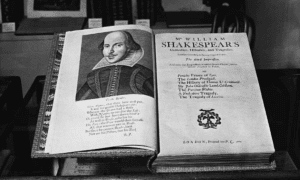

Henry Wriothesley, Earl of Southampton, was an early patron and supporter of Shakespeare’s work. He dedicated his first and second published works, Venus and Adonis (1593) and also another one,
The Rape of Lucrece (1594), respectively, to Wriothesley. The first writings published by Shakespeare were two lengthy narrative poems, one with 1,194 lines and the other with 1,855 lines. Amid an epidemic that forced theaters to close, Wriothesley’s financial backing provided much-needed revenue.
The 154 sonnets that Shakespeare composed, which he most famously published in 1609 as a compilation, were probably written by Shakespeare in the 1590s or even earlier.
Scholars classify the Fair Youth sonnets (the first 126) and the Dark Lady sonnets (the final 28) mainly according to two unknown issues Shakespeare discusses. No one has yet figured out who the posh young man and annoying woman were.
A Life in Acting and Playwriting: The King’s Men
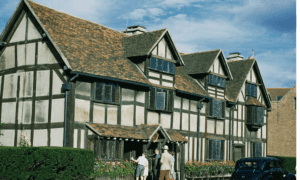

When Shakespeare first arrived in London in 1594, he joined the Lord Chamberlain’s Men playing group. It was widely believed to be the most influential company of its day and became known as the King’s Men.
Shakespeare may or may not have been a founding member of the company; either way, he had a vital role in its success. Although he began his acting career, he later focused on writing.
According to records, his works were published and sold as popular literature. Shakespeare was also a shareholder in the corporation. There is a common belief that Shakespeare wrote The Taming of the Shrew first.
However, the plays Titus Andronicus and Henry VI Part 2 were published first. The first edition was produced in 1594 in quarto, the same size as a pamphlet. Shakespeare had written 16 of his 37 plays and a decent fortune by the end of 1597.
During this period, according to civil documents, Shakespeare bought New Place, one of the most enormous mansions in Stratford, for his family. Shakespeare is said to have spent most of his time in London writing and performing after a four-day horse ride from Stratford.
Every year during the 40-day Lenten period, he would return home to focus on his work while the theaters were closed. Sir Stanley Wells, a professor and authority on Shakespeare, suggests that the author may have stayed in Stratford more often than thought, traveling only to London for work-related matters.
Even though the aristocracy of 16th-century England did not hold a particularly favorable view of the theater, a few members of the nobility were generous patrons of the arts and actors.
The only two significant exceptions were Elizabeth I and James I, who became a fans of Lord Chamberlain’s Men in the late 1590s after seeing a performance in 1594. He became king in 1603, and the organization rebranded itself as the King’s Men.
4) The Works of William Shakespeare


The precise order of Shakespeare’s plays is murky. Still, throughout the twenty years between 1590 and 1613, he penned 37 plays with historical, tragic, and comedic subjects. These boundaries are hazy in some plays, and our understanding of them has evolved.
Shakespeare’s early plays adhered to the standard style of the day, using rhetorical language and complex metaphors that didn’t necessarily fit with the story’s narrative or characters. Nonetheless, Shakespeare displayed remarkable originality by reworking the conventional style to suit his needs and introducing a more fluid vocabulary.
Lines of unrhymed iambic pentameter, sometimes known as blank poetry, were Shakespeare’s primary metrical pattern in his plays, with only minor variations. While this is the general tone for the plays, some sections stray from it and employ more poetic or straightforward prose.
History
Shakespeare wrote many historical dramas in his early works. According to theater scholars, Shakespeare was trying to legitimize the rise of the Tudor dynasty via all three of Henry VI’s plays—Richard II and Henry V—by highlighting the disastrous consequences of weak or corrupt rulers. He also wrote Henry VIII, Richard III, King John, and two plays about Henry IV. These works were probably written by 1599, except Henry VIII, Shakespeare’s last play.
Tragedies
Despite having written three tragedies—including Romeo and Juliet—before 1600, Shakespeare did not devote significant attention to the genre until after the turn of the century. Macbeth, Othello, and King Lear all offer universally relatable portrayals of human nature through their characters.
Perhaps the most famous of these plays, Hamlet, examines moral failings, incest, betrayal, and vengeance. The tragic hero and his loved ones are inevitably destroyed by the twists and turns caused by these moral failings in Shakespeare’s plays.
Considering that England’s aging queen, Elizabeth I, had no legitimate heir, Julius Caesar, written in 1599, depicts the political turmoil in Rome that may have struck a chord with audiences during that period.
Shakespeare also wrote four additional tragic plays: Coriolanus, Timon of Athens, Anthony and Cleopatra, and Titus Andronicus.
Comedies
Among Shakespeare’s many comedies is his debut piece, The Taming of the Shrew. The romantic Merchant of Venice, the amusing A Midsummer Night’s Dream, the clever and wordplaying Much Ado About Nothing, and the lovely As You Like It are among his other early comedies composed before 1600 or so.
It would be more accurate to call some of his comedies tragicomedies. The Tempest, Cymbeline, The Winter’s Tale, and Pericles are all part of this group. Even though they’re darker in tone than the comedies, the plays nonetheless avoid tragic tragedies like Macbeth or King Lear since they conclude with forgiveness and reconciliation.
Some Further Comedies Written by Shakespeare Are:


The Merry Wives of Windsor, another is the Twelfth Night, and also the Measure for Measure, with Love’s Labour’s Lost, and another is The Two Gentlemen of Verona, and also The Comedy of Errors
The genre-defying “problem play” that Shakespeare created with Troilus and Cressida is a prime example. The Tragedie of Troylus and Cressida was the play’s initial title. Still, some of Shakespeare’s contemporaries considered it a comedy or a history.
Partnerships and The End of Play
It is well-known that Shakespeare collaborated with other playwrights, like John Fletcher. The Two Noble Kinsmen, written by both of them in 1613 and 1614, is Shakespeare’s last known theatrical composition.
Cardenio, a play they worked on but unfortunately lost, is also lost to history. The Raigne of King Edward the Third and Sir Thomas Other are two other plays that Shakespeare co-wrote with his brother. With these additions, Shakespeare’s canon now includes 41 plays.
Reflection and Disagreements
Some consider the Bard of Avon England’s national poet, and history will record him as the greatest dramatist of all time. By fusing words, altering their meanings, or incorporating foreign-origin words, he is said to have added or invented around 1,700 new terms to the English language.
The phrases “downstairs,” “egregious,” “kissing,” “zany,” and “skim milk” all originate from Shakespeare. The expressions “love is blind” and “wild goose chase” are among his numerous famous creations.
Initial Edition
Not all of Shakespeare’s works were printed during his lifetime. Thanks to the First Folio, we know about eighteen of Shakespeare’s plays—including Julius Caesar, Twelfth Night, and Macbeth.
Among Shakespeare’s friends and fellow performers in The King’s Men, John Heminge and Henry Condell penned the 36-play collection celebrating its 400th anniversary this year. Seven years after his death, in 1623, it was published under the title of Mr. William Shakespeare’s Comedies, Histories and Tragedies.
An original portrait of Shakespeare appears on the title page of the First Folio, which adds to its literary significance. Martin Droeshout engraved it, and it is one of the author’s two genuine portraits. The second is a memorial bust at Stratford’s Holy Trinity Church.
While just 235 of the original 750 First Folios from 1623 have survived to the present day, scholars believe the number is far higher. Between 1632 and 1685, Shakespeare’s Folio underwent three more editions, each including new plays and updated material.
What is Adaptive Leadership: The Leading Leadership Styles That Will Influence 2024
Was Shakespeare the Author of His Plays?
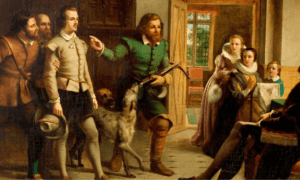

The identity of Shakespeare’s real author began to be debated around 150 years after his passing. Some literary critics and scholars started posing more recognizable names—such as Francis Bacon, Edward de Vere, and Christopher Marlowe—as potential playwrights for the plays.
Much of this was due to the lack of primary documents written during Shakespeare’s lifetime and the vague descriptions of his life available. While the Stratford government and Holy Trinity Church recorded Shakespeare’s existence, neither of these sources confirmed that he was a playwright or performer.
Additionally, critics pondered how a writer with Shakespeare’s intellectual insight and poetic force could have such a limited education. Various organizations have questioned Shakespeare’s authorship throughout the centuries.
During the 19th century, when admiration for Shakespeare peaked, the most grave and strident skepticism started. The naysayers believed that the sole evidence about Shakespeare from Stratford-upon-Avon depicted a humble guy who rose from humble origins to marry at a young age and achieve great success in the real estate industry.
Founded in 1957, the Shakespeare Oxford Society’s members contend that the works attributed to “William Shakespeare” were written by English aristocrat and poet Edward de Vere, the 17th Earl of Oxford.
Oxfordians point to de Vere’s education, his familiarity with aristocratic life, and the structural parallels between his poetry and Shakespeare’s works as reasons to support their claim. They argue that Shakespeare lacked the necessary literary training and education to produce works of such eloquence and depth of character.
However, most people who study Shakespeare believe that he authored every one of his plays himself. They note that other playwrights of the period also had questionable pasts and originated from humble backgrounds.
The classics may have served as a solid groundwork for literary writers at King’s New School in Stratford, which included Latin in its curriculum. According to those who contend that Shakespeare was the creator of the Bard, the absence of information on Shakespeare’s life does not prove that his life did not exist. They mention that his name appears on the title pages of published plays and poems as proof.
Some historical writers and critics have credited Shakespeare with penning works like King John, The Comedy of Errors, and another one is The Two Gentlemen of Verona.
In 1601, the court of King James I acknowledged Shakespeare as a Groom of the Chamber and a member of the King’s Men theater company. The company produced seven of Shakespeare’s plays during this time.
Contemporaries who worked with Shakespeare as both an actor and a playwright also provided compelling circumstantial evidence of intimate interactions.
Literary Canon
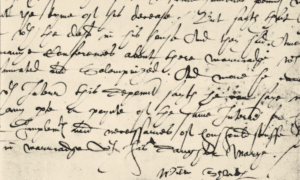

Shakespeare was widely considered a highly esteemed actor and playwright in the late 16th and early 17th century. However, his brilliance as a stage genius was only acknowledged in the nineteenth century.
Admiration and respect for Shakespeare and his works peaked during the early Victorian and Romantic eras of the 1800s. Scholarly and artistic currents in the twentieth century revisit and incorporate his writings into their practices.
People from many walks of life continue to study and reinterpret his plays in light of the many cultural and political settings in which they have been performed. Shakespeare’s characters and stories are brilliant because they depict genuine people going through a spectrum of emotions and struggles beyond their Elizabethan English setting.
Quotes
- The wise man recognizes his foolishness, while the foolish believe he is wise.
- Before all else, be truthful to yourself; from there, being dishonest with other people will inevitably follow, just as night follows day.
- Nothing is inherently excellent or terrible; our thoughts give rise to these categories.
- The brave only feel the chill of death once in their lives, whereas cowards meet their demise multiple times.
- Oh my, what complete dimwits these humans are!
- Crying dilutes the intensity of sorrow.
- Eventually, we come to despise what we initially dread.
- At times, men control their destinies; the problem, my dear Brutus, is not with our stars but with ourselves for being subordinate.
- It’s too late to turn back the clock.
- We are the stuff of dreams, and sleep is the finishing touch to our brief existence.
- It is not acceptable to let great minds wander unchecked.
- We should eliminate all attorneys immediately.
- Everyone and everything is a performer on this grand stage.
- Everyone needs an ear, but few will ever hear your voice.
- No darkness exists except ignorance, I say.
- Both time and I are squandering each other.
- There are three paths to greatness: being born great, becoming great, and thrust into greatness.
Are you searching for biographies of famous and robust people? Then you are in the right place. Click on blogkingworld.com for more highly informative and helpful articles, sign up for our newsletter for free, follow me on LinkedIn, and please like and share it with your friends and family. Also, please comment for further guidance; thanks for your precious time.


